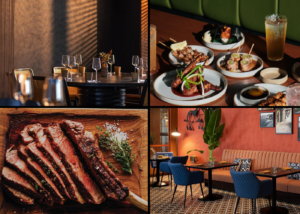In the ever-evolving landscape of the Food & Beverage (F&B) industry, technology plays an indispensable role in streamlining operations, enhancing customer experiences, and optimizing business processes. One crucial element that often goes unnoticed but plays a pivotal role in making these technological wonders possible is middleware. In this blog post, we will delve into what middleware is, why it is essential in the F&B software context, and how it contributes to the seamless functioning of the industry.
Middleware is a term that might sound a bit abstract, but its purpose is quite straightforward. It serves as a bridge or intermediary software layer that connects different software applications, enabling them to communicate and share data effectively. Middleware acts as the glue that holds together the diverse components of a software ecosystem.
Middleware essentially functions as a mediator between various software components, allowing them to exchange information and work harmoniously, even if they are written in different programming languages or designed to run on different operating systems. Think of it as a translator that ensures different software systems can understand and interact with each other.
Middleware in the F&B Industry
Now that we have a basic understanding of what middleware is, let’s explore its significance in the Food & Beverage industry’s software landscape:
Integration of Point-of-Sale (POS) Systems: In the F&B sector, POS systems are the heart of every transaction. Middleware plays a pivotal role in connecting these POS systems with other crucial software components such as inventory management, order processing, and customer relationship management. This integration ensures that sales data is accurately recorded, inventory is updated in real-time, and customer information is readily available.
Supply Chain Management: Managing the supply chain in the F&B industry is a complex task, involving multiple vendors, distributors, and warehouses. Middleware solutions facilitate the seamless exchange of data between these entities, helping businesses monitor inventory levels, track shipments, and ensure timely deliveries to meet customer demand.
Online Ordering and Delivery Services: With the rise of online ordering and delivery platforms, F&B establishments need to synchronize their in-house systems with third-party apps. Middleware comes to the rescue by connecting these external platforms to the restaurant’s internal systems, enabling real-time order updates and delivery tracking.
Customer Engagement and Loyalty Programs: Middleware enables F&B businesses to create personalized customer experiences by integrating with customer engagement and loyalty programs. This ensures that customer data is synchronized, allowing restaurants to offer targeted promotions and rewards based on individual preferences and behavior.
Data Analytics and Reporting: Middleware facilitates the collection and consolidation of data from various sources within an F&B establishment. This data can then be analyzed to gain insights into customer preferences, sales trends, and operational efficiencies, helping businesses make informed decisions.
Middleware may not be the star of the show, but it is undoubtedly a backstage hero in the Food & Beverage software context. Its ability to connect, integrate, and streamline various software systems makes it an indispensable component for F&B businesses looking to stay competitive and meet the demands of the modern consumer.
In an industry where efficiency, accuracy, and customer satisfaction are paramount, middleware ensures that the technology supporting F&B operations functions seamlessly. So, the next time you enjoy a delicious meal at your favorite restaurant or order food from an app, remember that middleware is working diligently behind the scenes to make it all happen.




